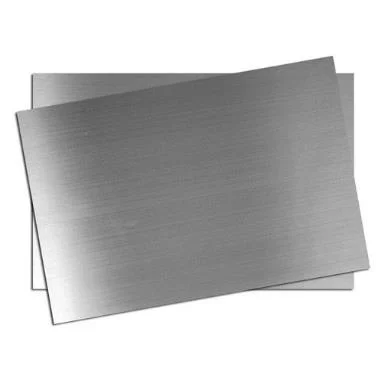This article introduces in detail the main points of purchasing stainless steel plates, the reasons why stainless steel plates have corrosion resistance.
Stainless steel plate selection essentials
The selection of stainless steel plate should consider the operating conditions, such as manual operation or automatic operation, the performance and type of the hot press, and the quality requirements of the pressed material such as hardness and gloss. Economic accounting should also be considered. Every time a newly polished stainless steel plate is required, the number of decorative plates that can be produced with a slow quality is required.
In addition, when choosing the most reasonable thickness of the stainless steel plate, its service time, quality and stiffness should be considered, and at the same time, the strength requirements of the stainless steel plate under pressure; thermal conductivity;
If the thickness of the stainless steel plate is not enough, it is easy to bend, which will inevitably affect the production of decorative plates. If the thickness of the stainless steel plate is too large and the steel plate is too heavy, it will not only increase the cost of the steel plate but also bring unnecessary difficulties to the operation.

At the same time, the allowance that should be left when the stainless steel plate is processed or used should also be considered. The thickness of the copper plate is not absolutely consistent, but the thickness of the same steel plate should be as consistent as possible. Generally, the thickness tolerance of a medium-sized saw plate is 0.05 to 0.15 mm.
If the requirements are too strict, the grinding cost will also increase accordingly. Generally, it is a steel plate with high tensile strength and high hardness. The greater the resistance to mechanical damage, the longer the durability, but the cost of grinding and processing is also relatively high.
The corrosion resistance of stainless steel plate
The corrosion resistance of stainless steel mainly depends on its alloy composition (chromium, nickel, titanium, silicon, aluminum, manganese, etc.) and internal structure, and the main role is chromium. Chromium has high chemical stability and can form a passivation film on the surface of the steel to isolate the metal from the outside world, protect the steel plate from being oxidized, and increase the corrosion resistance of the stainless steel plate. After the passivation film is destroyed, the corrosion resistance decreases.
Corrosion condition of stainless steel plate
1. On the surface of the stainless steel plate, there are deposits of dust or heterogeneous metal particles containing other metal elements. In the humid air, the condensed water between the deposits and the stainless steel connects the two into a micro-battery, which triggers an electrochemical reaction. In reaction, the protective film is destroyed, called electrochemical corrosion.
2. Organic juices (such as vegetables, noodle soup, sputum, etc.) adhere to the surface. In the presence of water and oxygen, the stainless steel plate forms an organic acid, and the organic acid will corrode the metal surface for a long time.
3. The surface adhesion contains acid, alkali, and salt substances (such as alkali water and lime water splashing on the decoration wall), which causes local corrosion of the stainless steel plate.
4. In polluted air (such as the atmosphere containing a large amount of sulfide, carbon oxide, and nitrogen oxide), the stainless steel plate meets the condensed water, forming the liquid point of sulfuric acid, nitric acid, and acetic acid, causing chemical corrosion.
The above four situations can cause damage to the protective film on the surface of the stainless steel plate and cause rust, thereby rusting.
The above is the whole content about stainless steel plate that will be brought to you today by Huiying Special Steel. More information on stainless steel plates will be continuously updated. See you in the next issue.


